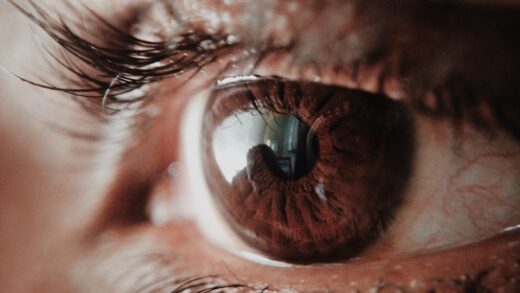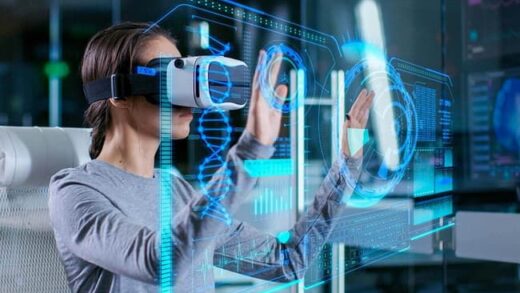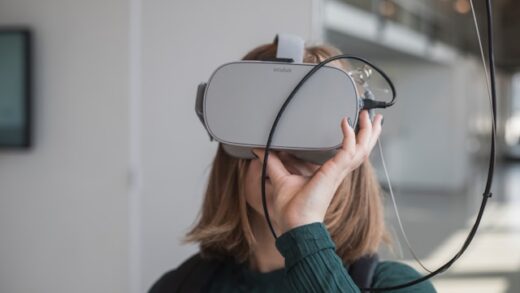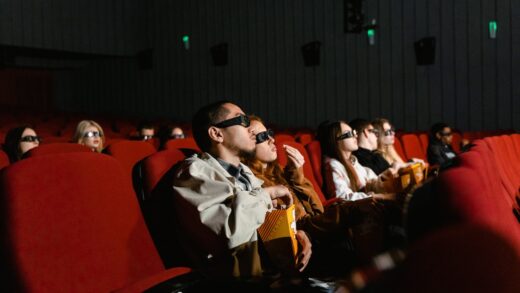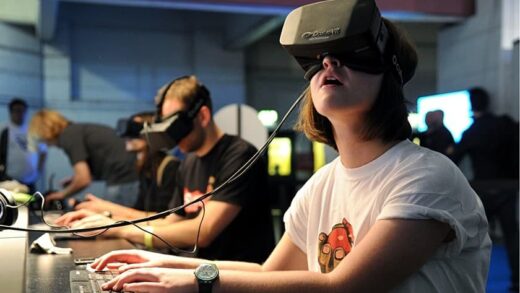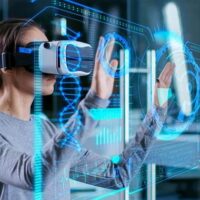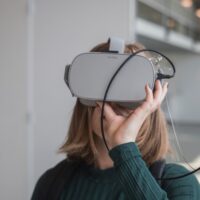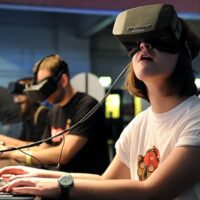Introduction
In the realm of modern technology, Virtual Reality (VR) stands out as a groundbreaking innovation. From gaming to healthcare, VR is transforming how we interact with digital environments, offering immersive experiences that were once the stuff of science fiction. This article explores the current state of VR technology, its applications, and its potential for the future.
The Evolution of Virtual Reality
Early Beginnings
The concept of VR dates back to the mid-20th century. Early VR systems, such as the Sensorama in the 1960s, offered rudimentary multisensory experiences. However, these early attempts were limited by the technology of the time.
Technological Advancements
The 1990s saw significant developments with the advent of more sophisticated VR headsets like the Virtual Boy by Nintendo and the SEGA VR. Despite their initial hype, these early VR systems failed to capture the market due to their limitations in graphics, processing power, and user experience.
Modern VR Systems
The 21st century brought about a renaissance in VR technology. Companies like Oculus (now a part of Meta), HTC, Sony, and Valve have introduced high-resolution VR headsets that provide a more immersive and interactive experience. Advances in motion tracking, haptic feedback, and graphical rendering have played pivotal roles in making VR more accessible and appealing to the masses.
Applications of Virtual Reality
- Gaming and Entertainment
Gaming is perhaps the most well-known application of VR. Platforms like Oculus Rift, PlayStation VR, and HTC Vive have revolutionized gaming by providing players with immersive experiences that traditional gaming systems cannot offer. VR games allow users to step into virtual worlds, interact with characters, and engage in gameplay that feels incredibly real.
- Education and Training
VR is making significant inroads into education and professional training. Medical students, for example, can use VR to simulate surgeries and practice procedures in a risk-free environment. Similarly, VR is used for training pilots, soldiers, and even astronauts, providing a realistic training ground without the associated dangers.
- Healthcare
In healthcare, VR is used for pain management, physical therapy, and mental health treatments. Patients can engage in VR experiences that distract them from pain or anxiety. VR also helps in treating PTSD by gradually exposing patients to triggering environments in a controlled and safe manner.
- Architecture and Real Estate
Architects and real estate professionals use VR to create virtual walkthroughs of buildings and properties. This allows clients to experience a property before it is built, making it easier to make design decisions and detect potential issues early in the development process.
- Social Interaction
Social VR platforms like VRChat and Facebook Horizon offer new ways for people to interact in virtual spaces. Users can create avatars and meet in virtual environments, making social interactions more engaging and fun. These platforms are particularly beneficial in times of social distancing, providing a sense of presence and connection despite physical separation.
For those who are particularly interested in no deposit bonuses, our comprehensive guide to €20 no deposit offers is worth reading. Here https://livecasinosgreek.com/en/20-euro-no-deposit/ you will find information about the best casinos that offer this attractive bonus, as well as the terms and conditions and how to get a free €20 to start playing without risking your own money. Don’t miss the chance to grow your bankroll right from the start with our expert advice and up-to-date reviews.
The Technology Behind VR
Hardware Components
Modern VR systems consist of several key hardware components:
– Headsets: These are the primary devices that display the virtual environment. They typically include high-resolution screens and lenses to provide a wide field of view.
– Motion Trackers: These devices track the user’s movements and translate them into the virtual environment. They can be external sensors or integrated into the headset.
– Controllers: Handheld devices that allow users to interact with the virtual world. They often include buttons, joysticks, and motion sensors.
– Haptic Feedback Devices: These provide tactile feedback to the user, enhancing the sense of immersion by simulating physical sensations.
Software and Content
The VR experience is powered by sophisticated software that renders 3D environments in real time. This software must handle complex tasks such as tracking the user’s movements, rendering graphics, and managing interactions. Content creation tools and platforms, such as Unity and Unreal Engine, are essential for developing VR applications.
Challenges and Limitations
Technical Challenges
Despite significant advancements, VR technology still faces several challenges:
– Latency: Low latency is crucial for a seamless VR experience. High latency can cause motion sickness and disrupt the immersive experience.
– Resolution and Field of View: Higher resolution and wider fields of view are essential for more realistic experiences. However, these improvements require more powerful hardware.
– Battery Life: Wireless VR headsets offer more freedom of movement but are limited by battery life.
Content Creation
Creating high-quality VR content is resource-intensive and requires specialized skills. Developing realistic and interactive virtual environments demands significant time and effort, which can be a barrier for widespread adoption.
Accessibility and Cost
While the cost of VR systems has decreased over the years, high-end VR setups remain expensive for the average consumer. Additionally, VR experiences can be physically and visually demanding, making them less accessible to people with certain disabilities or health conditions.
The Future of Virtual Reality
Technological Innovations
The future of VR holds exciting possibilities with advancements such as:
– Improved Hardware: Future VR systems will likely feature lighter and more comfortable headsets, higher resolutions, and better motion tracking.
– Wireless Solutions: Improvements in wireless technology will enhance the mobility and convenience of VR systems.
– Augmented Reality Integration: The convergence of VR and Augmented Reality (AR) will create new mixed-reality experiences that blend the virtual and real worlds seamlessly.
Expanded Applications
VR will continue to find new applications across various industries. In education, VR could become a standard tool for remote learning and virtual classrooms. In healthcare, VR therapies will become more sophisticated and widely adopted. In entertainment, VR will offer new forms of interactive storytelling and social experiences.
Societal Impact
As VR technology becomes more prevalent, it will have significant social and cultural impacts. VR has the potential to change how we work, socialize, and experience the world. However, it also raises important questions about privacy, digital addiction, and the blurring of reality and virtuality.
Conclusion
Virtual Reality represents a new frontier in technology, offering unprecedented opportunities for immersive experiences across various fields. While there are challenges to overcome, the potential of VR is vast and continually expanding. As technology advances, VR will become an integral part of our lives, opening up new universes at the reach of our senses. The future of VR is not just about creating virtual worlds but enhancing our interaction with the real world, making the impossible possible.

